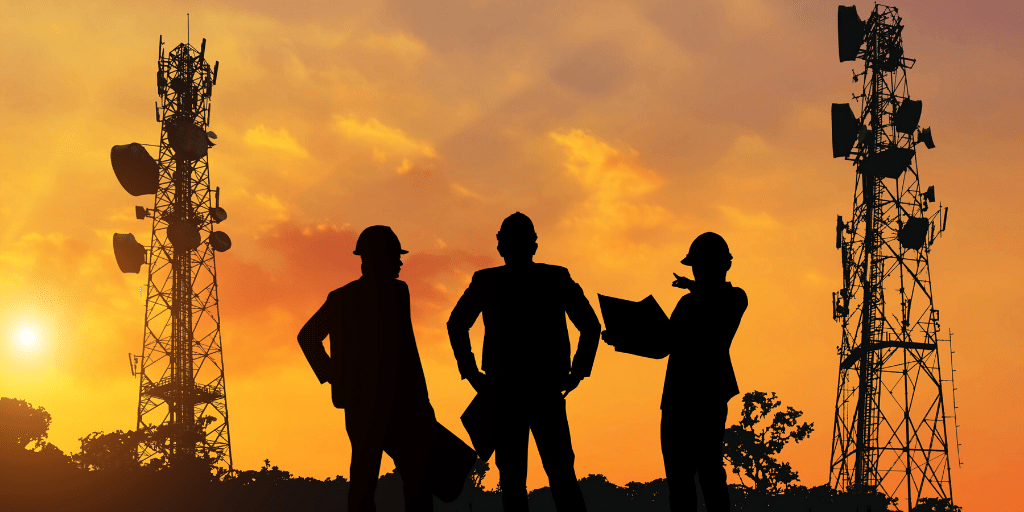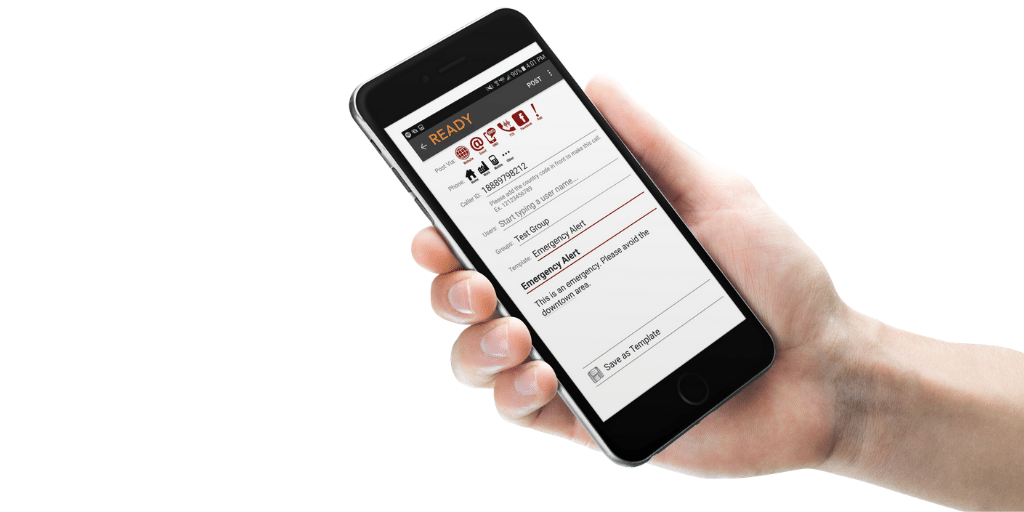
The TRACED Act aims to protect residents from disruptive, unwanted, fraudulent, and potentially harmful solicitations by marketers and nefarious spammers by phone or text. It also might inadvertently interfere with how public safety leaders issue vital news and information to subscribed residentsor residents or travelers in the path of an emergency. The comprehensive guide that follows explores the governing bodies, legislation, and technical terminology that defines this complex issue and helps public safety leaders understand its short and long-term implications for resident emergency communications.
The TCPA defines an ATDS as equipment that has the capacity to:
A robocall is a phone call that uses a computerized ATDS to deliver a prerecorded message, often sounding as if the voice speaking is coming from a robot. Robocalls are commonly used to share marketing or political campaign messages; however, the use of auto-dialing to deliver a computerized message is also used by subscription-based emergency notification systems, such as the CivicPlus ® mass notification system.

A spoofed call is one in which a scammer masks their identity by changing the number that is displayed on a caller ID using advanced technology.
The Telephone Consumer Protection Act of 1991 amended the Communications Act of 1934. It restricts telephone solicitations or telemarketing, the use of automated telephone equipment, and limits the use of automatic dialing systems, artificial or prerecorded voice messages, SMS text messages, and fax machines for marketing purposes. The TCPA is the legislative precursor to the TRACED Act.
President Trump signed the Pallone-Thune Telephone Robocall Abuse Criminal Enforcement and Deterrence (TRACED) Act into law on December 30, 2019. It gives the Federal Communications Commission (FCC) and law enforcement greater authority to prosecute telephone call scammers, and it should make it easier for residents to identify robocalls and avoid answering them.
The TRACED Act requires telecommunications service providers, such as Verizon, T-Mobile/Sprint, and AT&T, to implement a number-authentication system at no cost to consumers, to help network subscribers identify callers. It also increases penalties for robocallers that continue to solicit residents by phone.
The FCC can now levy civil penalties of up to $10,000 per call on unsolicited telemarketing attempts. The TRACED Act also gives law enforcement more time to go after robocallers by extending the statute of limitations to four years.
The TRACED Act comes in response to residents feeling overwhelmed and fed up with the number of telemarketing calls they receive. In 2018, Americans received a total of 48 billion robocalls, and as of November 2019, that number had skyrocketed to 54 billion according to Consumer Reports. As a result of such abuse, 70 percent of Consumer Reports survey respondents reported that they do not answer the phone if they do not recognize the caller to avoid speaking with a telemarketer. Now, the TRACED Act should mitigate the number of robocalls, and help residents more easily identify and ignore them.
The TRACED Act also intends to combat spoofed calls by requiring the use of the STIR/SHAKEN Authentication System.

The Secure Telephone Identity Revisited (STIR) and Signature-based Handling of Asserted Information Using toKENs (SHAKEN) is a framework of interconnected standards. Since some marketers have learned to thwart caller identification systems by using spoofed numbers, the STIR/SHAKEN authentication system uses digital fingerprints, or tokens to help determine whether the number from which a call is placed is the same as the number that shows up on a caller ID screen. STIR/SHAKEN digital fingerprints enable carriers to quickly scan their networks to identify, investigate, and block spoofed numbers—a process that used to take months or years of manual investigation.
Many telecommunications carriers have already implemented STIR/SHAKEN technology, which allows residents to receive a warning on incoming phone calls that says “Spam Risk” or “Spam Likely.” Smaller carriers, however, particularly those within the Rural Broadband Association (NTCA) still use older analog technology and need time to implement the use of digital fingerprints. They are not exempt from the TRACED Act requirements, however, and must still implement robocall mitigation programs.
One point of clarification needed that the TRACED Act currently lacks is what constitutes consumer consent to receive marketing calls. Consumer advocates argue that without clear guidance as to how a resident can give or withdraw their consent from a source, robocallers may find loopholes and continue to issue undesired calls. This unclear element of the legislation also poses concerns for public safety departments that utilize mass notification systems like CivicPlus to deliver subscription-based emergency alerts to residents during a local disaster.
Another possible loophole within the TRACED Act and current applicable technology come from international robocalls that can skirt U.S.-based authentication standards and law enforcement. This gap gives marketers and scammers the ability to continue robot dialing from international virtual call centers.
Voice calls are not the only form of bothersome unsolicited digital marketing plaguing communication device owners. The TRACED Act also allows the FCC to create rules to protect residents from receiving unwanted robotexts and smishing attempts when a scammer issues a phishing attack (sending a message that appears to come from a known contact) via text message. As with email phishing attacks, scammers masquerade as tech support representatives, government workers, friends, family, or financial institutions and attempt to coax residents into providing personally identifiable information such as bank account numbers, credit card numbers, or social security numbers that might lead to fraudulent purchases or identity theft.

The TCPA’s restriction on using an automatic telephone dialing system or an artificial or prerecorded voice does not apply to calls made for an “emergency purpose,” defined as calls made necessary in any situation affecting the health and safety of consumers. However, public safety alerts might inadvertently be halted by the STIR/SHAKEN system.
For businesses and public safety departments that use call masking technology to issue business correspondence or emergency alerts, the TRACED Act is creating complications. For example, when a public safety office issues an emergency alert via its mass notification system, it is not coming directly from the public safety director’s desk but rather from a dedicated masked number. Under the legislation, legitimate service providers may continue using masked numbers but must register them in a way that will not trigger an inadvertent flagging by STIR/SHAKEN systems.
For CivicPlus Mass Notification system’s administrative users, our technical support team can set up a custom reverse call-back number to help comply with TRACED Act regulations and minimize STIR/SHAKEN system interference.
For more information about complying with the TRACED Act, refer to FEMA’s Effective Communication training guide.
Understanding thatresidents need immediate updates, news, and information from trusted sources such as hospitals, health care agencies, and municipalities during the COVID-19 crisis, On March 20, 2020, the FCC issued a sua sponte Declaratory Ruling narrowing the TCPA’s emergency purpose exception in the context of calls “relating to the COVID-19 pandemic.” The Declaratory Ruling confirms that the COVID-19 pandemic constitutes an imminent health risk to the public and that “[a] critical component of the nation’s efforts to address and contain this health-related emergency is the ability of health care and public safety organizations to communicate effectively with the public.”
Within these guidelines, a robocall will be permitted as an emergency notification as long as:
For more information, refer to the FCC’s ruling regarding utility notifications, TCPA, and COVID-19.
The FCC must complete several actions between the time of the TRACED Act’s signing and the end of 2022. The following FCC compliance timeline was reported by The National Law Review on January 6, 2020.
By June 27, 2020
By July 27, 2020
By September 25, 2020
By December 30, 2020
By June 30, 2021
December 30, 2022
Note: Information in this article does not constitute legal advice.